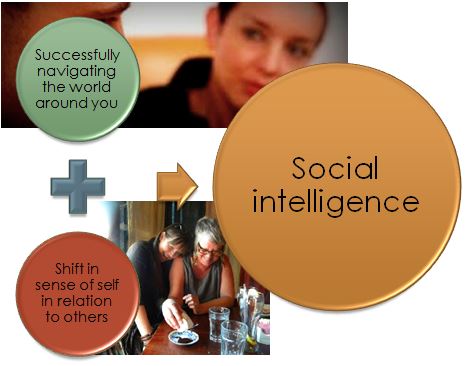 Social Intelligence is successfully navigating and connecting with the people around us, and making more thoughtful decisions about the direction in our lives. We become more socially intelligent by understanding the root causes of human behavior. Specifically, here at the Social Intelligence Institute, we teach research from the fields of neuroscience and social, cognitive, and developmental psychology to help us understand human behavior.
Social Intelligence is successfully navigating and connecting with the people around us, and making more thoughtful decisions about the direction in our lives. We become more socially intelligent by understanding the root causes of human behavior. Specifically, here at the Social Intelligence Institute, we teach research from the fields of neuroscience and social, cognitive, and developmental psychology to help us understand human behavior.
SI Principles
Our institute has four main principles that we believe people of all ages can make a part of their daily living.
- View others as humans, rather than objects.Other people are not chess pieces. They are aware and capable, just like us, with thoughts, feelings, hopes, dreams, and anxieties. Other people are as real as we are.
- To understand and react appropriately to another person, we must first determine WHAT they see, HOW they see it, and WHY they see it the way they do. No human is alike and everyone has their own perspective on what is happening around them. This unique perspective, a personal lens, is acquired from life experiences, culture, parenting, and genetic make-up. The ability to read other people, understanding what they are thinking and feeling, from their perspective, is the cornerstone of social intelligence.
- Recognize automatic behavior in yourself and others. 95% of what we say, do, and think is automatic. It is behavior that is done without thought. Once you are aware of these behaviors in yourself, you can choose to change course and behavior differently. Likewise, as you recognize automatic behavior in others, you can respond in more appropriate ways because you have a better understanding of why they are behaving the way they are.
- It’s all about choice. How we view humans that cross our paths is a choice. For instance, when we pass a stranger on the street, we make the choice to look at them and say “hello” or look through them without engagement. As we talk with our child, we make the choice to see the world through our own eyes or through our child’s eyes. As we work in teams at work, and automatic group behaviors begin to emerge, we make the choice to jump into the fray or lead the group down a more productive path.


